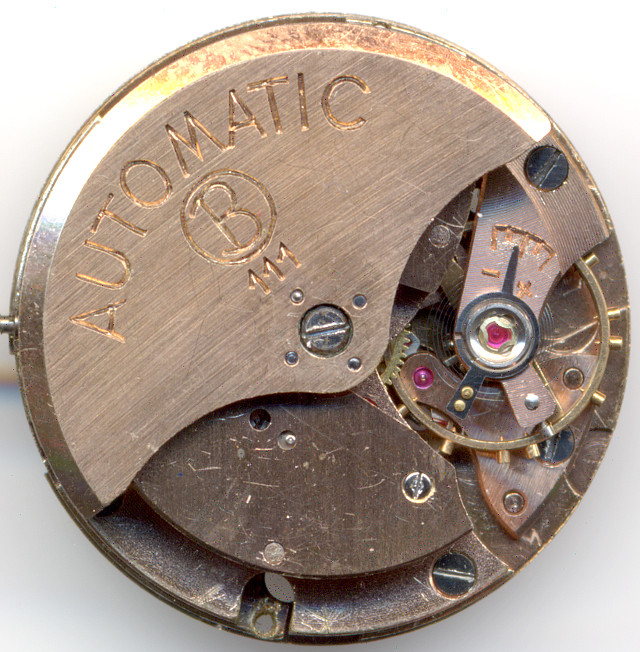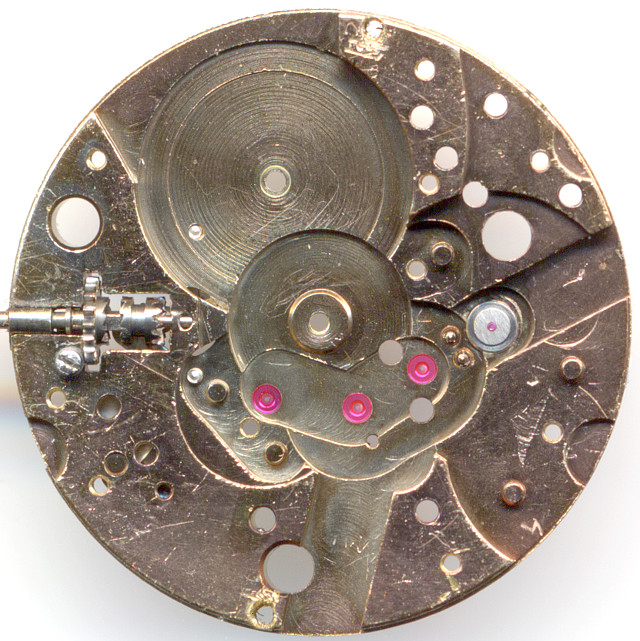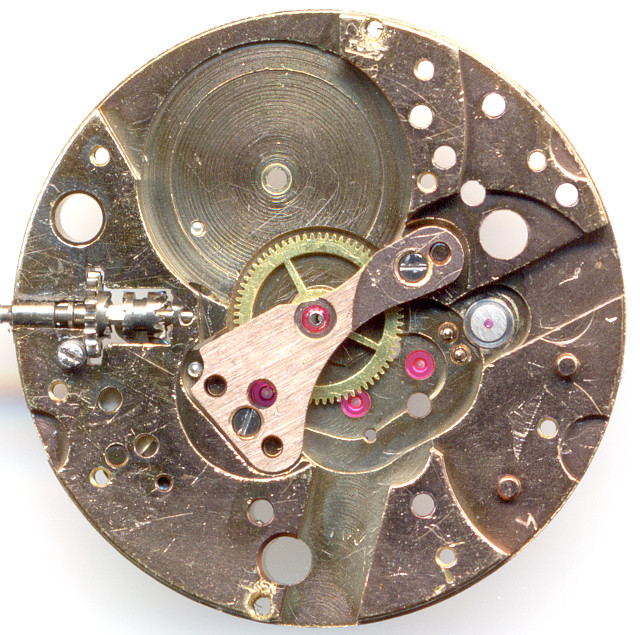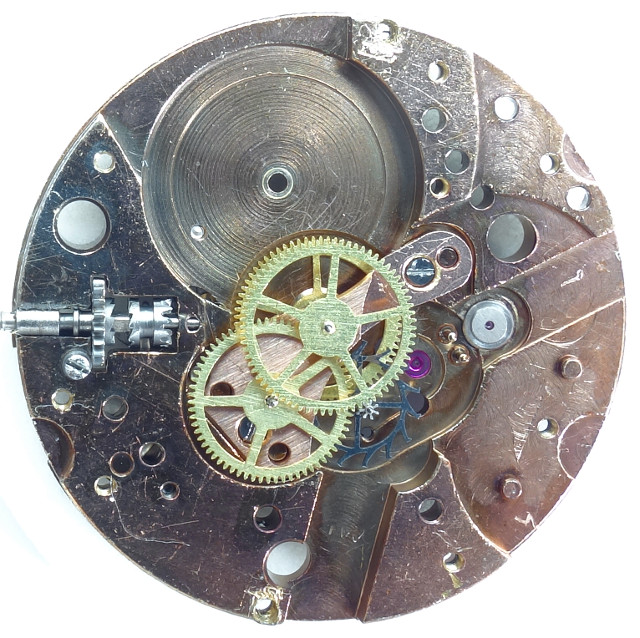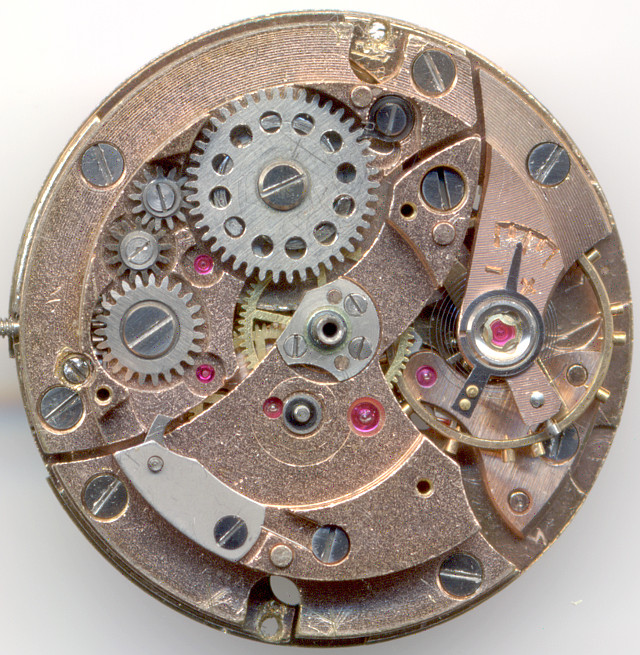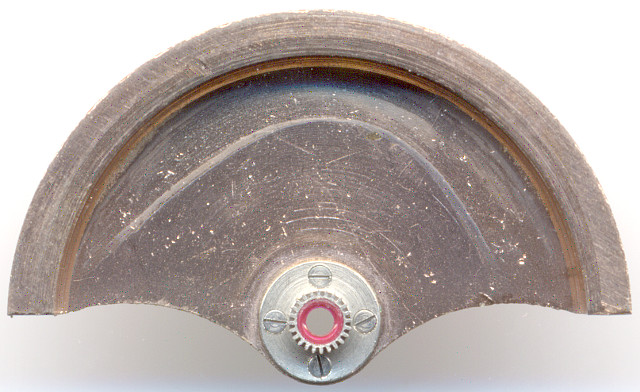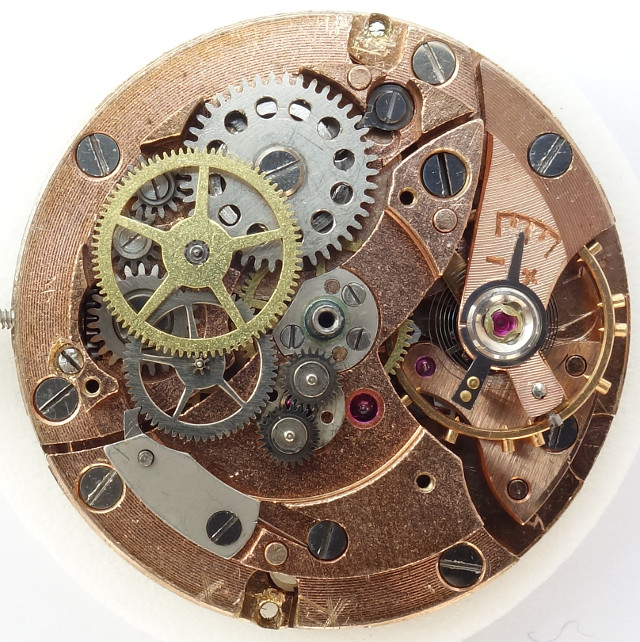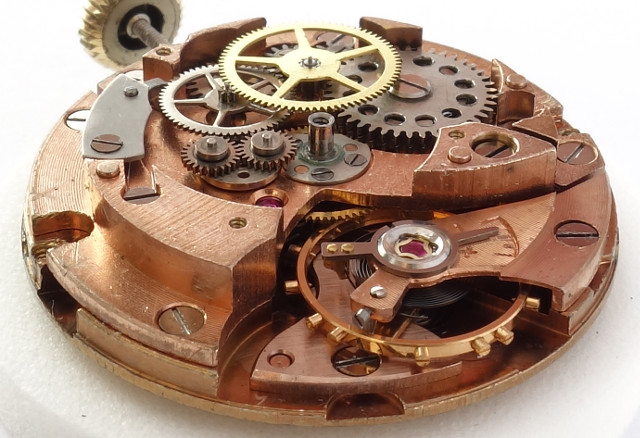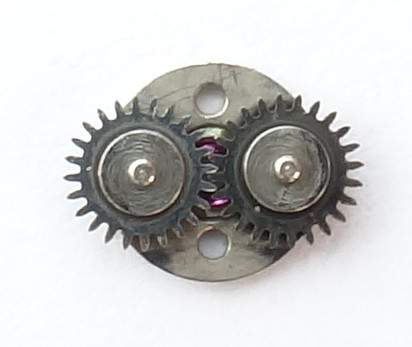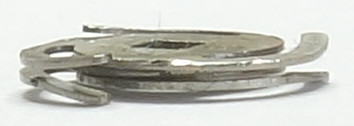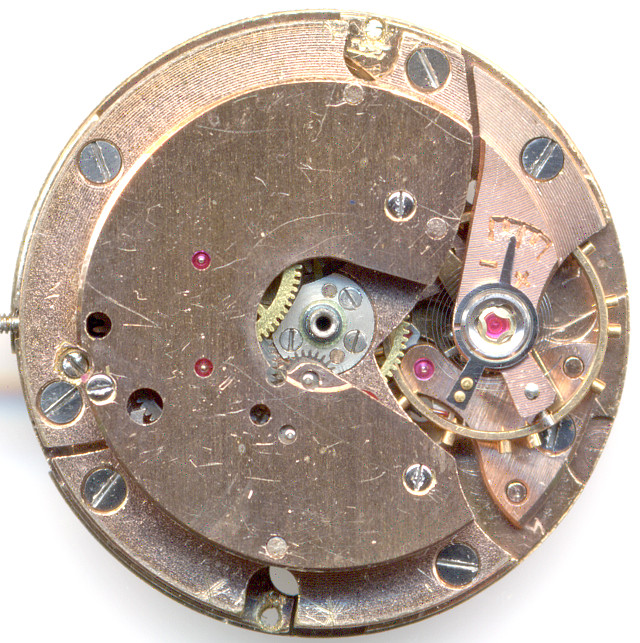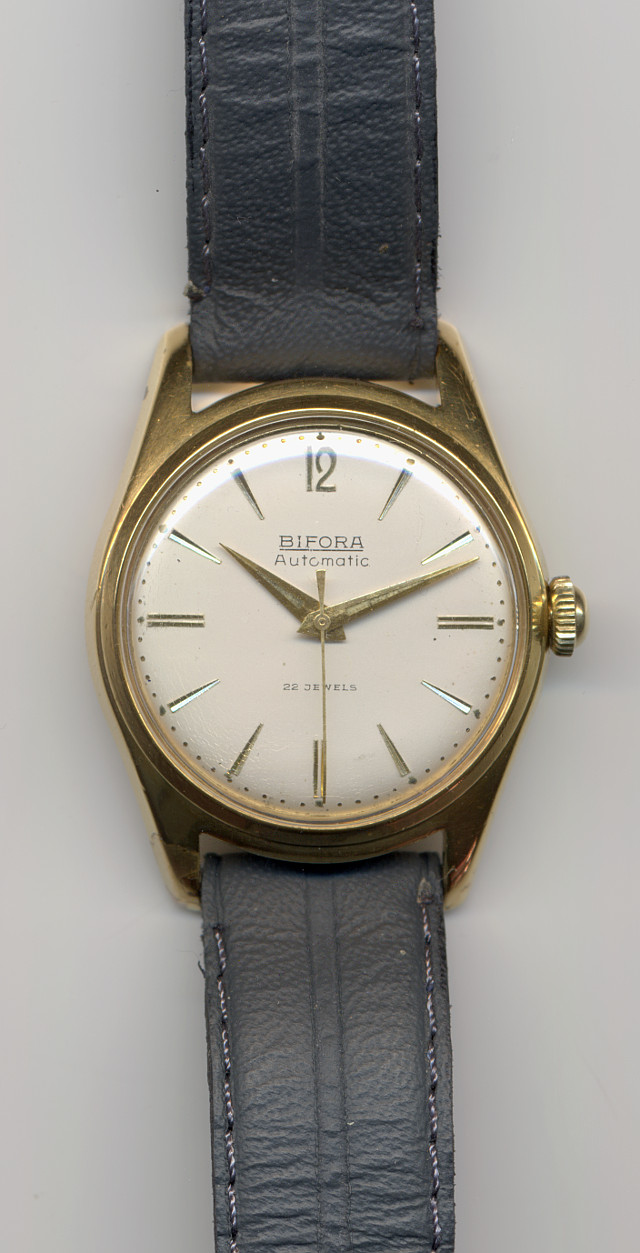Description
In the early 1950ies when in Germany selfwinding movements became popular, at least Bifora and DuRoWe outdid each other by releasing new selfwinding movements virtually every year.
1953, Bifora released already their third selfwinding movement, the caliber 111A, which was the successor of the caliber 103 SA (new).
The Bifora 111A impresses especially by its red-golden color, which gives it a noble appearance.
The diameter of the Bifora 111A is now reduced to 11 1/2 lignes. The red-gold base place beautifully shows, that all important fast turning bearings are equipped with rubies. In total, this movement has got 22 jewels.
As usual on movements from the 1950ies, also the Bifora 111A has got a directly driven center minute wheel, which is beared under an own cock.
The gear train is correspondingly classic, but unlike its predecessor, it already has a sweep second.
It can be seen in the top view very well that the gear train takes up little space, which in turn benefits the oscillating weight, for the more space left.
The gear train with its directly driven center minute and directly driven center second were standard in the 1950ies and so of course also on Bifora watches. The golden toned screw balance is beared in two inhouse Bishock bearings and beats with 18000 A/h. Its precise frequency can be adjusted with a long regulator arm.
Of course, the Bifora 111A has got a swiss pallet lever escapement.
Even when the Bifora 111A bases on the Bifora 111, the winding- and gear bridge differ quite match from the manual wind counterparts.
On this movement, too, the oscillating weight is axle beared and carries a center ruby bearing. The gear connects with the upper wheel of the rocking bar changer. The large engravement on the oscillating weight is fascinating, since it looks a bit like it was made by hand.
The gear train of the selfwinding part is the same as on the predecessor Bifora 103 SA (new)". The only difference is, that the click now has got an own upper bearing.
At 7 o’clock you see the rocking bar changer of the selfwinding module. It is a simple construction, consisting of two connected gears. Depending on the direction of the upper wheel, either it, or the lower wheel connects with the first reduction wheel, which is saved by a ratchet against turning in the wrong direction.
The disadvantage of that rocking bar changer is, that it has got a pretty large dead angle, between which the oscilating weight just switches, but does not wind. For people who don’t move much, it can be insufficient.
The selfwinding mechanism is engaged with a two-side lamella clutch with the ratchet wheel of the winding system. This clutch is responsible, that the selfwinding mechanism is disengaged when the watch is manually wound.
As you can see, that the clutch is a simple construction. Only it connects with the mainspring barrel, but not the two clutch wheel on top and on the bottom!
There’s one additional difference to the predecessor movement: The axle for the oscillating weight is no longer mounted on the inner side of the gear bridge, but on top of it. This makes a change of it easier in case of a broken axle.
It seems, that the red gold tone on the dial side is only very thing, on some parts it is even missing. Technically, this is no problem, but it’s bad for the aesthetics of that beautiful movement.
The Bifora 111A has got a yoke winding system, of course.
Also the Caliber 111A was not produced very long, already in the next year, 1954, its successors 103/112 (decentral second) and 104/112 (center second) were launched and they were produced at lease four years.
Technical data
| Manufacturer: | Bifora |
| Caliber: | 111A |
| Size: | 11 1/2''' (measured: 25,0mm) |
| A/h: | 18000 |
| Number of jewels: | 22 |
| Escapement: | Pallet lever |
| Balance types: |
Nickel screw balance |
| Shock protection(s): |
Bidlingmaier (Bifora) |
| Balance bearing / direction hairspring: | Clockwise |
| Moveable stud: | no |
| Adjust mechanism: | Long regulator arm |
| Construction: |
|
| Construction type: | solid construction |
| Winding mechanism: | yoke winding system |
| Setting lever spring: | 2 hole(s) |
| Features: |
|
| Production period: | 1953 - 1956 |
| References: |
Flume: 1957 55 |
| Production years: | 1953-1956 |
| Inventory number: | 17039 |
